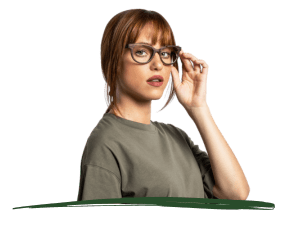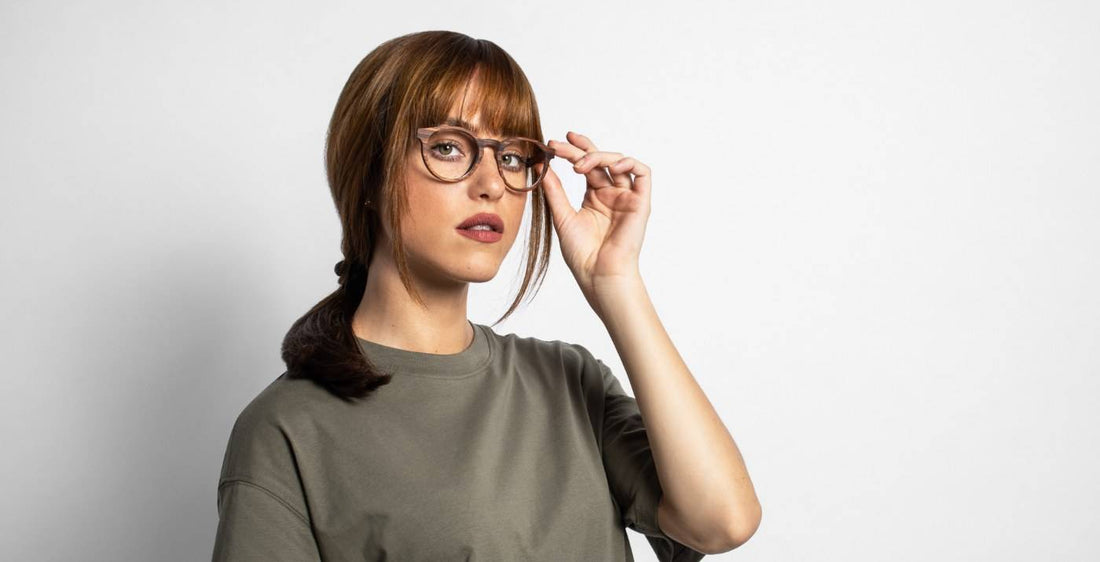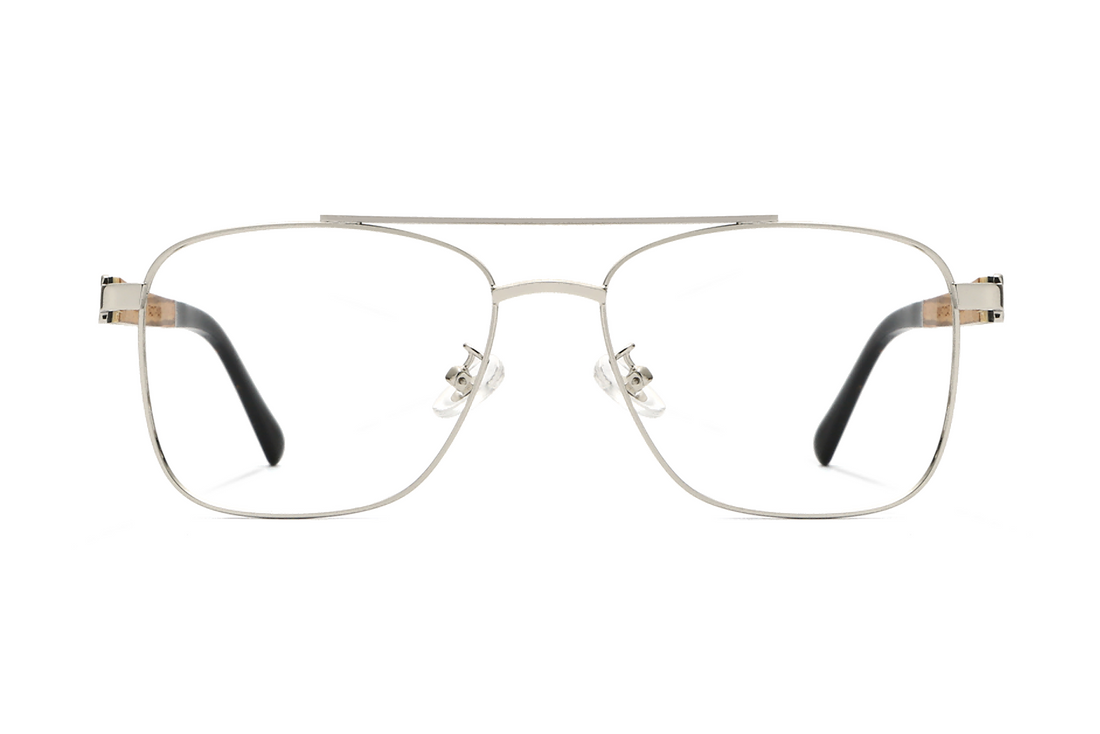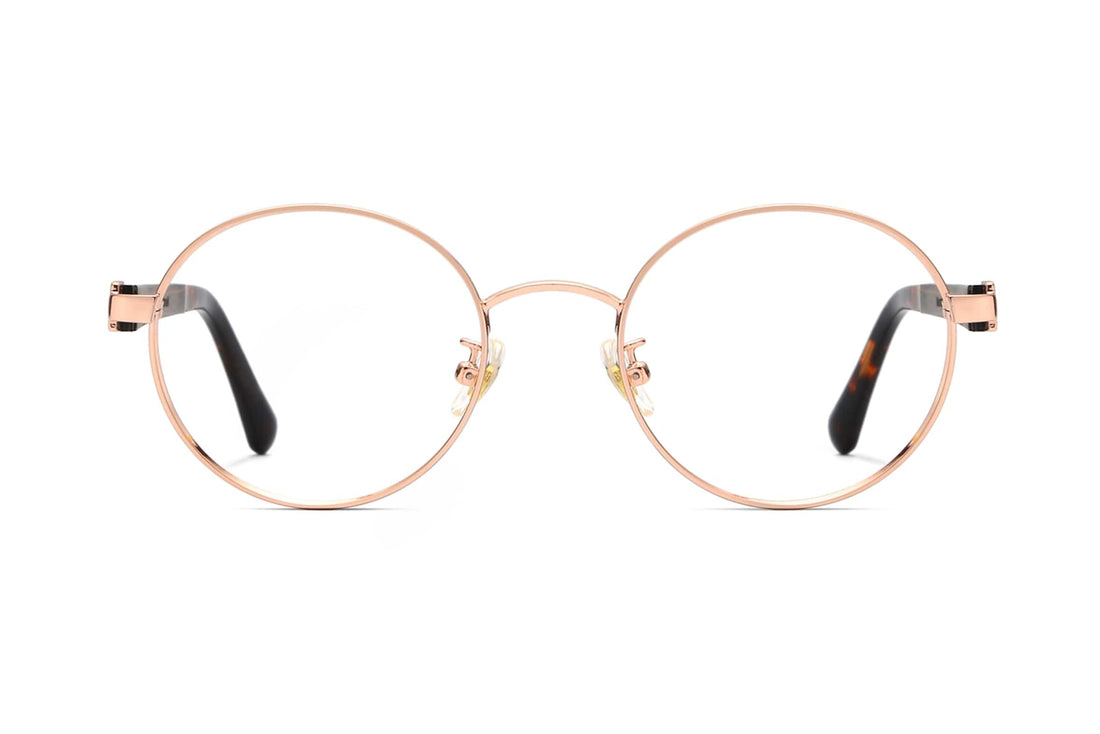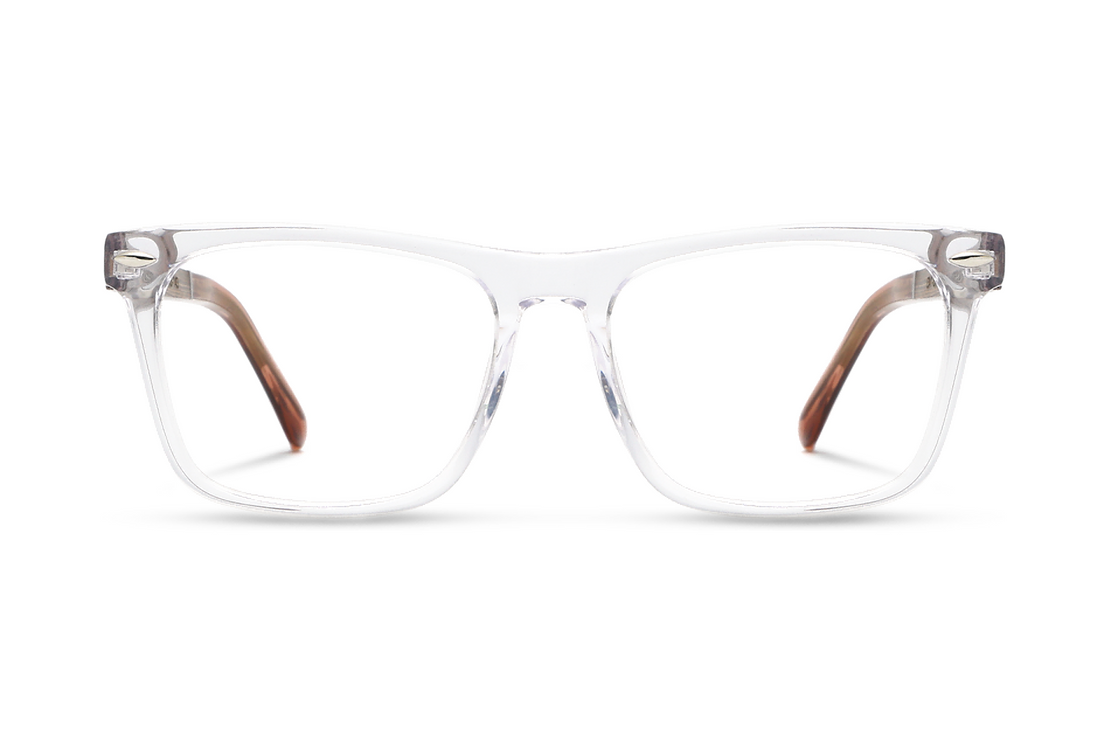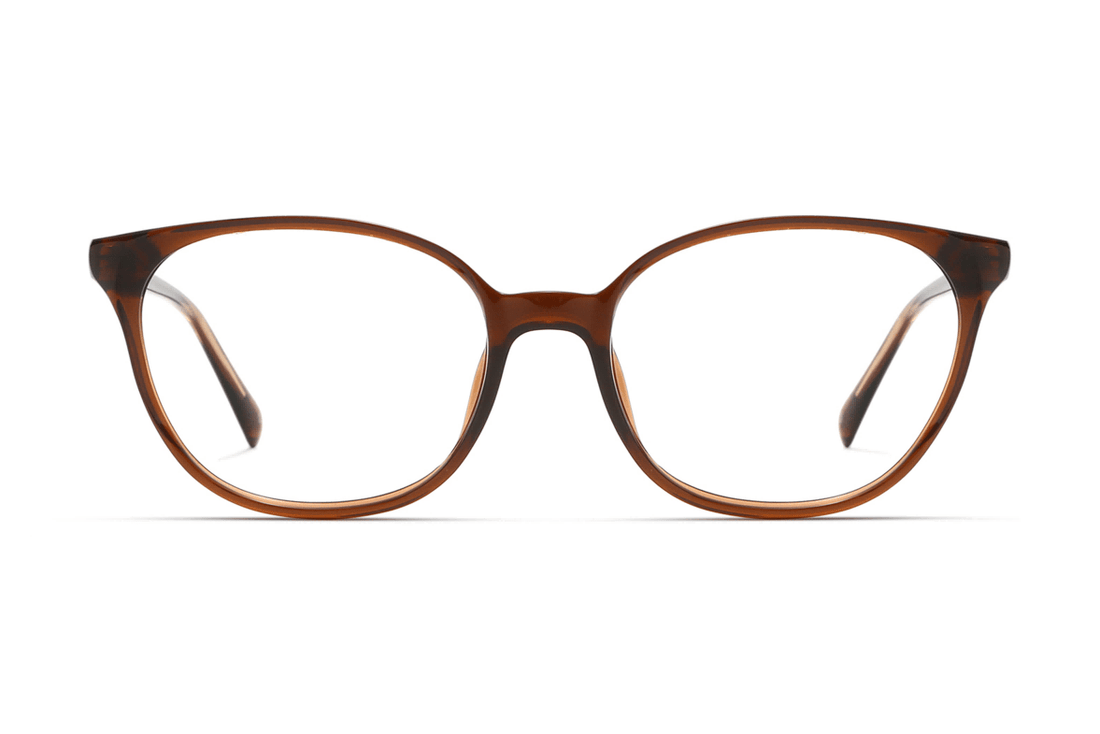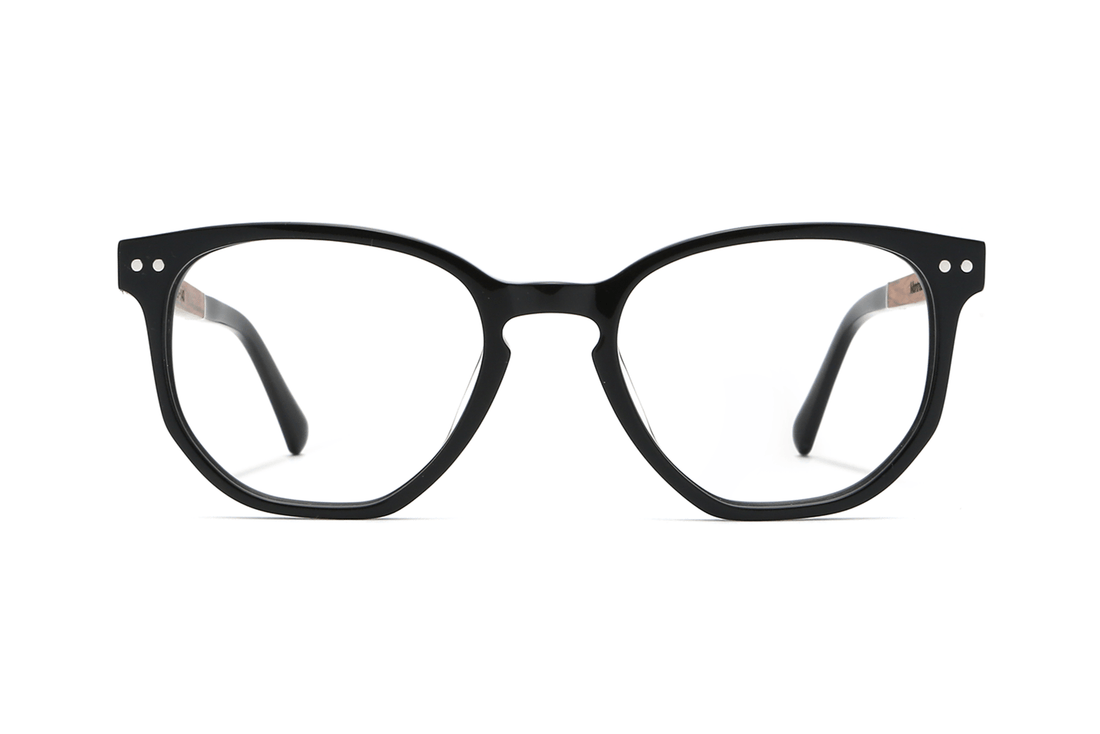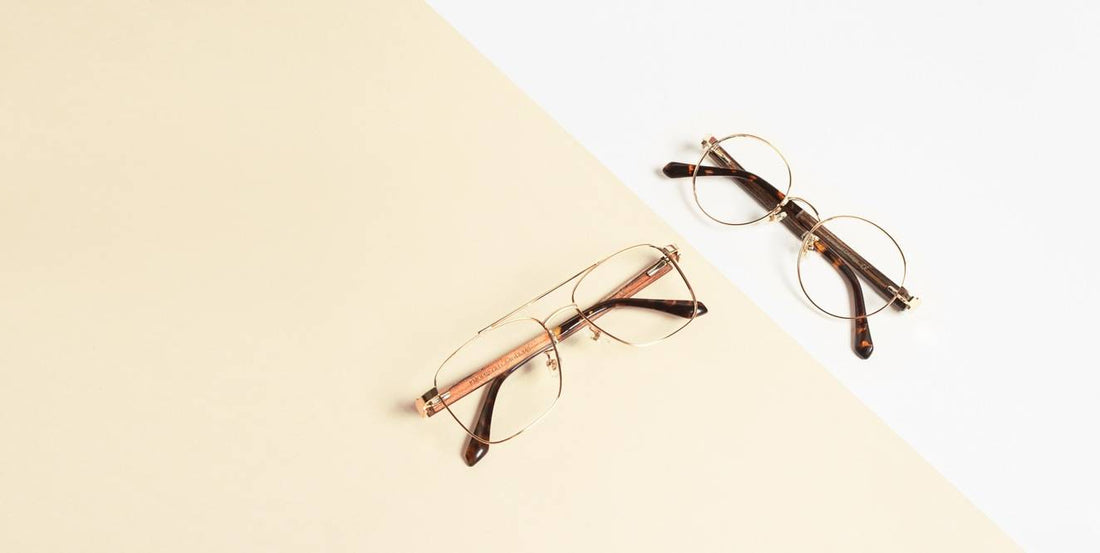
How Often Do You Need New Glasses for Optimal Eye Health?
How Often Do You Need New Glasses
8 min read • Posted on 15 October 2024
Have you ever wondered: How often do you need new glasses? Your eyesight can change slightly over time, so when exactly do you need another pair, and how can you know? Many experts recommend eye examinations at least once every one to two years to stay ahead of the curve. Still, several variables can shorten the time you go between pairs of glasses, from how your prescription fluctuates to how you treat your specs.
In addition to vision changes, everything from your lifestyle or even your fashion sense to eyeglasses that are scratched, out of style, or do not use the latest technology in lens coatings could affect how often you replace your glasses. If you know when you need to replace your glasses, you’ll ensure you see the world clearly and comfortably.
Signs It’s Time for New Glasses
If you notice changes to your vision or experience new physical symptoms, it might be time for new glasses. However, it’s also time to book an appointment with your eye care professional. Blurred vision, double vision, or problems focusing might indicate that your prescription has changed.
Simple symptoms such as new headaches might also indicate problems with your eyes’ ability to focus and can impact your productivity. Simple changes, such as a slight increase in power (or dioptre), can make a difference. The longer you delay these symptoms, the more strain they put on your tired eyes.
Frequent headaches, eye pain or strain, and dizziness can also indicate that your glasses need an update. Your eyes must do much more work to compensate for out-of-date lenses, wearing glasses that no longer adequately address your correction needs. If your eyes are working hard, it can show up as pain.
These symptoms often accompany the need for an updated prescription, and by the way, they tend to sneak up on you and take you by surprise, especially if you’re staring at your computer screen all day, but your eyes are working away on their own. Don’t wait for the symptoms to keep you from doing what you want; if they start dragging, it’s probably time to get an eye exam and a new pair of glasses.
Vision Changes
Vision changes are the most common reason to consider a new pair of glasses. Do you find yourself squinting more frequently? Does it take longer to focus on things than it used to? Sometimes, these changes are minor and gradual. But at a certain point, they can impact how you read, drive, or do other things requiring precise visual acuity. Even small fluctuations in your blurry vision can affect your depth perception or the levels of fatigue in your eyes, sometimes indicating that the prescription needs an update to prevent wear and tear on the delicate optical balance of the eyes.
Blurred vision, double vision, or trouble with your focus should never be brushed aside. You might have outgrown your lenses, but you could also have a more serious underlying eye condition: regardless of the cause, if you have any of these things occurring more often than not, it’s probably time for a reassessment. Even when your glasses don’t seem to be your fault, allowing your eyes to strain under an outdated prescription can make it more likely your next pair will require an upgrade.
Physical Symptoms
If your glasses fail you, your body can send several physical messages. Headaches, especially in the forehead or temple region, are one of the primary early warning signs that everything is not right with your glasses. Staring at things too long through lenses that are not right for you can lead to tension headaches and neck aches, making you not want to read or use a computer because it’s too painful. Dizziness with changes in focus, from near to far, or vice versa, is another common sign of a wrong glasses prescription.
Chronic eye strain, related to a growing sense of fatigue and irritability, is just as debilitating as constantly rubbing your peepers and inevitable head and neck strain. These are significant indications that your corrective lens prescription is no longer doing its job; if you’ve been dreaming after your sunglasses more frequently, you cannot ignore this in the hope that the symptoms will fade. Headaches and dizziness are just the tip of the proverbial iceberg bound to sit on your shrinking optic nerve if you rest your life-scenes on a faulty source of vision.
Light Sensitivity
Light sensitivity and other glaring issues are all signs that your glasses are no longer up to the task. Why else would you have to squint more in bright conditions or under powerful lights indoors? Did it ever seem like your lenses had a thin coating, subject to wear and tear and scratches? New versions of lenses now offer better options and better durability, with more easily applied coatings.
Sensitivity to light can also cause vision problems even when driving at night because of excessive glare from oncoming headlights, possibly interfering with vision. Upgrading the lenses to include anti-reflective lenses from light sources such as oncoming headlights decreases the amount of light reflecting out of the lenses, allowing more light through and into the eyes for better vision.
The Impact of Wear and Tear
No matter how much you care for your glasses, they will need repair, replacement, or adjustment after years of wearing them. Lens scratches are one of the most common problems, but even minor scratches may significantly reduce the clarity of your lenses. Daily activities such as going out, reading a book, or looking at your phone will become an effort after your lenses become scratched. You might see stripes, spots, light refractions, or even multiple images, all leading to uncomfortable frontal headaches within hours of wearing your glasses.
In addition, frames can rattle through normal wear and tear. Slightly loose or bent frames will not rest correctly on your face and can cause eye pain or uneven correction. Rusting and fading over time will add a decaying element that renders your frames less valuable and attractive.
Contact lenses' scratches and damage
Don’t underestimate the issue of scratched contact lenses. Even a minor scratch can cause light to scatter, creating glare. This can make seeing less precise and can cause eyestrain, affecting focus. Over time, this can become a bigger problem, as each scratch you get contributes to your vision quality eroding. In addition to this, having your lenses scratched will make you use your eyes more, making them feel irritated, something you can certainly live without.
Minor scratches are so easy to ignore, but a few can quickly become a few dozen, quickly becoming a big problem when they prevent you from seeing clearly through your lenses. Scratches can also affect any lenses with special coatings, like anti-reflective or blue light filters, which prevent the eyestrain associated with screen use. If you notice scratches that are beginning to bother you, then replacing your lenses (or, sometimes, your entire glasses range) is your best bet to visit your optician, ensure you have a solid, clear vision, and take care of your eyes’ comfort.
Frame Wear
While sturdy, frames aren’t indestructible. They can warp over time through wear and tear, becoming too loose around your ears or misshapen. This can contribute to uncomfortable or ill-fitting glasses that slip down your face, pinch, or rub at sensitive areas during long-term wear. Plus, when frames aren’t sitting correctly on your ears and nose, your lenses won’t fit over your eyes as needed to be effective.
But frames can also suffer physical wear. Metal frames, for example, might suffer from rust, which can weaken the strength of the grids and make them unsightly. Over time, even plastic frames can fade or become more brittle, which makes them easier to break. Adjustments can help frames keep their shape, but when their structure starts to fail, it can cause discomfort and, if they break, physical injury to you.
How Often Do Experts Recommend New Prescription Glasses?
Based on Age
Everybody's vision changes with age, which is a great reason to update the prescription. However, it is with children and teens that the frequency of the changes is more pronounced, so their annual upgrade is often needed. As they grow, young nature smiles at us with the most enormous eyes we will ever meet.
However, with growing height comes growing eyes, so regular check-ups and reissuing the new prescription glasses are healthy rituals to keep the person's vision clear and enhanced. For adults with stable vision, the world prolongs the period, and happy customers should enjoy the results from their new glasses for a year and a half, maybe two.
Age-related eye conditions in seniors often require frequent updating to their prescription eyewear; presbyopia, cataracts, and other issues that can rapidly change vision make annual exams necessary. The older you get, the more your eyes adjust, so this is more important than ever if you’re over 40 and want your vision to be as clear and comfortable as possible.
Optometrists' Recommendations
Most optometrists prescribe exams once every one to two years, even if you think your vision hasn’t changed. Such visits are essential for increasing vision clarity and seeing signs of glaucoma, macular degeneration, and other chronic eye diseases that must be treated before they cause permanent damage to your vision. Statistically, there is every chance (and reason) that your vision will naturally degrade as you age. By skipping even a few years of check-ins, you could be missing out on your chance to prevent a new chronic condition from developing.
Special Cases
If you have a chronic condition such as diabetes or high blood pressure, glaucoma, or another eye disease that affects eye pressure, or if you notice frequent small fluctuations in your distance vision, you might need to update your progressives more often. Having your eyes and vision carefully checked regularly and your glasses fitted can help you monitor these changes and maintain your most robust possible correction.
Some drugs or treatments can also cause vision to shift suddenly, requiring you to update your eyeglass prescription more frequently. Suppose you are undergoing treatment for conditions that affect the eyes. In that case, it may be necessary to see your eye doctor more often, and updated glasses can help ensure your eyesight is managed well no matter what changes occur.
Technology changes in glasses
Blue Light and Anti-Reflective Coatings
Blue light and anti-reflective coatings are your eyes in today’s digital world. Blue screens also strain your eyes, disrupt sleep, and even cause permanent harm if not dealt with. Blue light-blocking glasses can eliminate this unwanted light and make screen time less taxing on your eyes. If you work long hours before a computer screen, these lenses can positively impact your eye comfort and general health.
Also, anti-reflective finishes prescription lenses are another recent must-have if you encounter artificial or sunlight glare. These coatings are suitable for your eyes without distracting from reflections in your lenses. Anti-reflective lenses help you see clearly at your desk or when driving at night. They help keep your eyes comfortable and sharp while letting you see more.
Progressive lenses and transition lenses
Progressive lenses are a convenient solution for people who require close and far-sighted vision. These lenses allow for an effortless change of focus from one focal point to another, so you don’t have to go from pair to pair. Progressives are designed to work, even when you are reading, driving, or at the computer. They’re handy for presbyopia patients, whose eyes can’t focus well on near objects.
Transition lenses are another excellent option for constantly roaming indoors and out. Such lenses automatically dim in sunlight and brighten up when you’re inside, offering UV protection and saving you money on sunglasses. Transition lenses are also convenient, so you don’t have to go back and forth between sets of glasses all the time, and your eyes will never be exposed to dangerous UV rays.
Strong and thin frames
Today’s glasses are more robust and comfortable. They should be lightweight and strong so that you feel comfortable the whole day. Titanium or premium plastic frames are robust but bendable and breakable, ideal for those requiring glasses to endure everyday abuse. These materials are often hypoallergenic, which benefits people with sensitive skin.
Lightweight frames, such as those made from bio acetate, offer exceptional durability and comfort. Bio acetate glasses are not only eco-friendly but also remarkably lightweight, ensuring they won’t press down on your nose and ears, allowing you to wear them comfortably all day. Whether you're wearing them for a full day of work or just for specific activities, durable yet stylish frames can withstand daily wear and tear without compromising on fashion or comfort. Advances in technology have made it possible to enjoy fashionable, functional frames, giving you the best of both worlds.
Style and Lifestyle Advice
It's important that your glasses give you a perfect eye and are appropriate for your lifestyle. Trendy eyewear is another significant phenomenon, with people constantly changing glasses according to their preferences or fashion. Whether you’re a fan of slim, minimal frames or statement-making styles, you can find glasses for all occasions. New glasses are an exciting way to look fresh and stay in style.
Lifestyles demand different kinds of glasses, and it’s vital to choose frames and lenses based on how you perform each day. Blue light lenses are likely necessary if you are an office worker; transition or polarized lenses will be preferred for outdoor enthusiasts. And if you have a pair of glasses for work, a pair for sports, and one for fun, your eyes will always be sharp regardless of what you are doing.
Fashion Forward
Glasses are no longer a tool; they’re now fashion. Some change their glasses not only when their prescription shifts but also to stay on trend. New colors and designs arrive each season, so you’ll have a pair of glasses to fit your style and fashion. From old school to wild new frames, there’s never a shortage of fashionably chic options for eyewear shopping.
Don’t be afraid to try on a new look. They’re also an exciting way to display your sense of fashion. Whether you seek a professional-looking style or a bit more adventurous and adventurous, there’s a frame for every personality. Upgrading your glasses to match the current fashion will make you feel bright and trendy every time you put them on.
Changing Lifestyles
Your eyewear ought to evolve along with your lifestyle. Blue-light lenses are great for those who often use computers to reduce eye strain and safeguard your eyes from the damaging effects of overheating. Polarized sunglasses are handy if you’ve just started enjoying an outdoor sport like hiking or biking and want to avoid glare and sun damage.
There might also be changes to your life, such as starting a new job or acquiring a new pastime. You should have a style to suit your personality and needs, whether heavy-duty frames for an active lifestyle or lens corrections for night driving. Adapting your glasses to your lifestyle can keep your eyes sharper, make you comfortable, and improve your performance.
Having Multiple Pairs
Owning a couple of glasses is better if you have a whole life with lots of change. People tend to have a single pair of glasses and maintain replacements or specialties for certain activities. So, you have one pair every day and another for exercising or doing sports outside. So you will always know you have the perfect pair of prescription eyeglasses made for the task.
Having several pairs means you never have glasses if one is damaged or lost. Keeping a spare pair on hand can save your life if your first pair breaks. Dedicated lenses, such as prescription sunglasses or blue light-blocking glasses, allow you to fit the glasses prescriptions the right lenses for the job and leave your eyes well-protected, whatever you are doing.
Finally, deciding whether you need glasses every few years is more than just sight. A new prescription, old lenses, or just a desire to change your style can mean the difference if you need a new pair of glasses. As long as you do regular and comprehensive eye exams and monitor changes to your vision, you’ll always be in style.
So, don’t sit around for crappy vision and pain. Notice the nudges and speak to your optometrist to ensure that your glasses will never be against you but for you. You can maintain your eye health long-term by staying proactive.
 Rayhan El-Asmar
Rayhan El-Asmar
